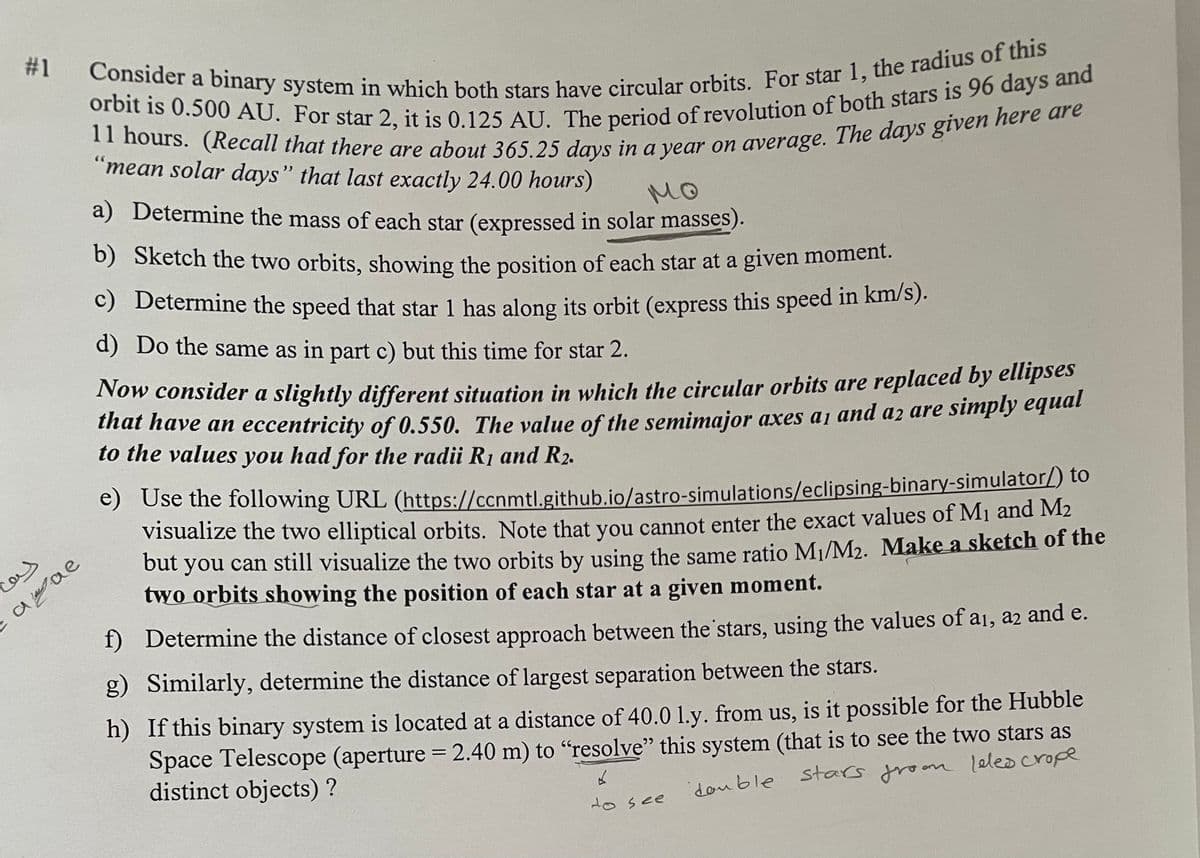b) Sketch the two orbits, showing the position of each star at a given moment. c) Determine the speed that star 1 has along its orbit (express this speed in km/s).
b) Sketch the two orbits, showing the position of each star at a given moment. c) Determine the speed that star 1 has along its orbit (express this speed in km/s).
Related questions
Question
#1 b, c

Transcribed Image Text:#1
فيف
ашае
Consider a binary system in which both stars have circular orbits. For star 1, the radius of this
orbit is 0.500 AU. For star 2, it is 0.125 AU. The period of revolution of both stars is 96 days and
11 hours. (Recall that there are about 365.25 days in a year on average. The days given here are
"mean solar days" that last exactly 24.00 hours)
мо
a) Determine the mass of each star (expressed in solar masses).
b) Sketch the two orbits, showing the position of each star at a given moment.
c) Determine the speed that star 1 has along its orbit (express this speed in km/s).
d) Do the same as in part c) but this time for star 2.
Now consider a slightly different situation in which the circular orbits are replaced by ellipses
that have an eccentricity of 0.550. The value of the semimajor axes a, and a2 are simply equal
to the values you had for the radii R₁ and R₂.
e) Use the following URL (https://ccnmtl.github.io/astro-simulations/eclipsing-binary-simulator/) to
visualize the two elliptical orbits. Note that you cannot enter the exact values of M₁ and M₂
but you can still visualize the two orbits by using the same ratio M₁/M₂. Make a sketch of the
two orbits showing the position of each star at a given moment.
Determine the distance of closest approach between the stars, using the values of a1, a2 and e.
Similarly, determine the distance of largest separation between the stars.
h) If this binary system is located at a distance of 40.0 1.y. from us, is it possible for the Hubble
Space Telescope (aperture = 2.40 m) to "resolve" this system (that is to see the two stars as
stars froom leles crope
distinct objects)?
double stars froom
6
to see
f)
g)
Expert Solution
This question has been solved!
Explore an expertly crafted, step-by-step solution for a thorough understanding of key concepts.
Step by step
Solved in 2 steps with 1 images
